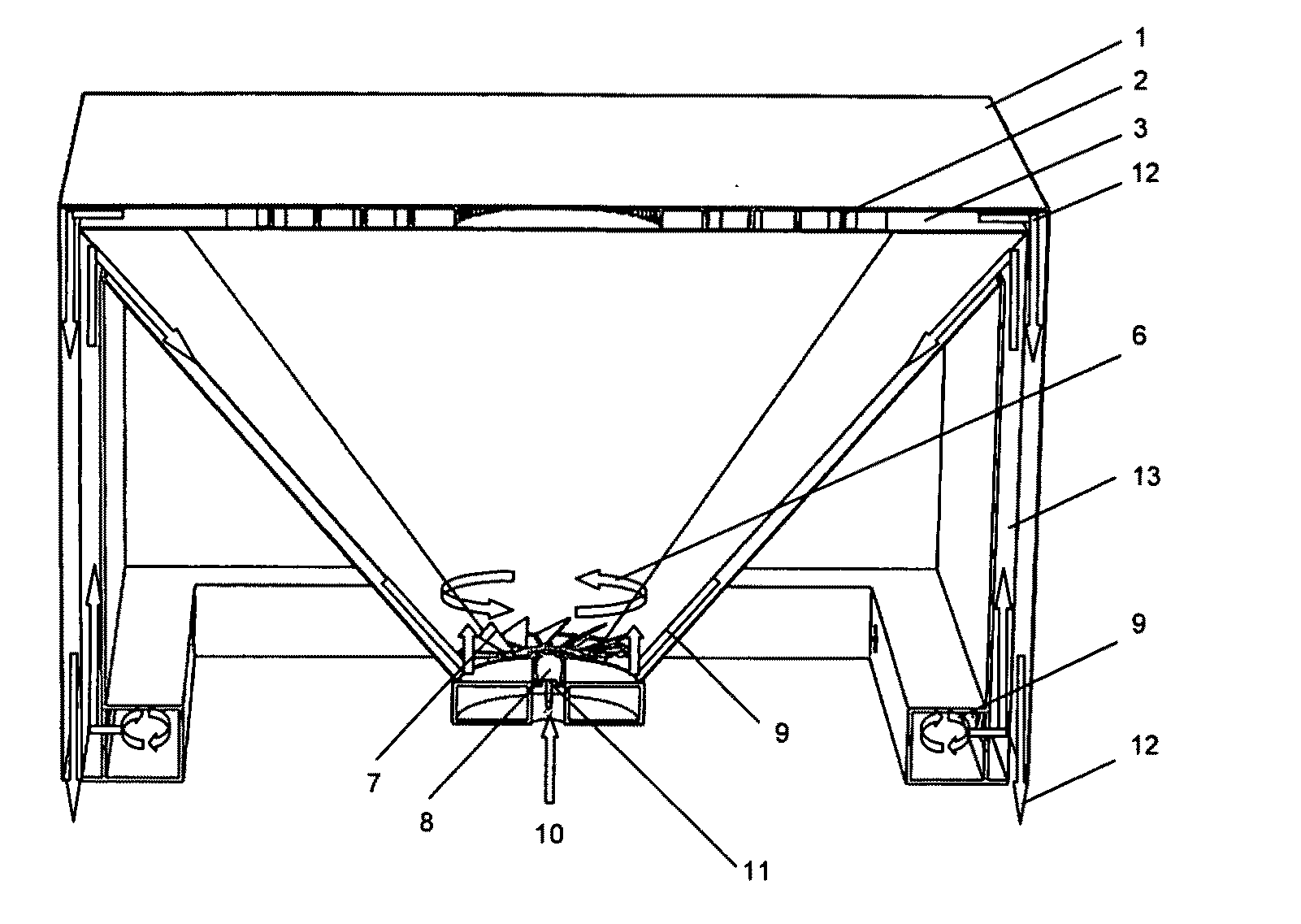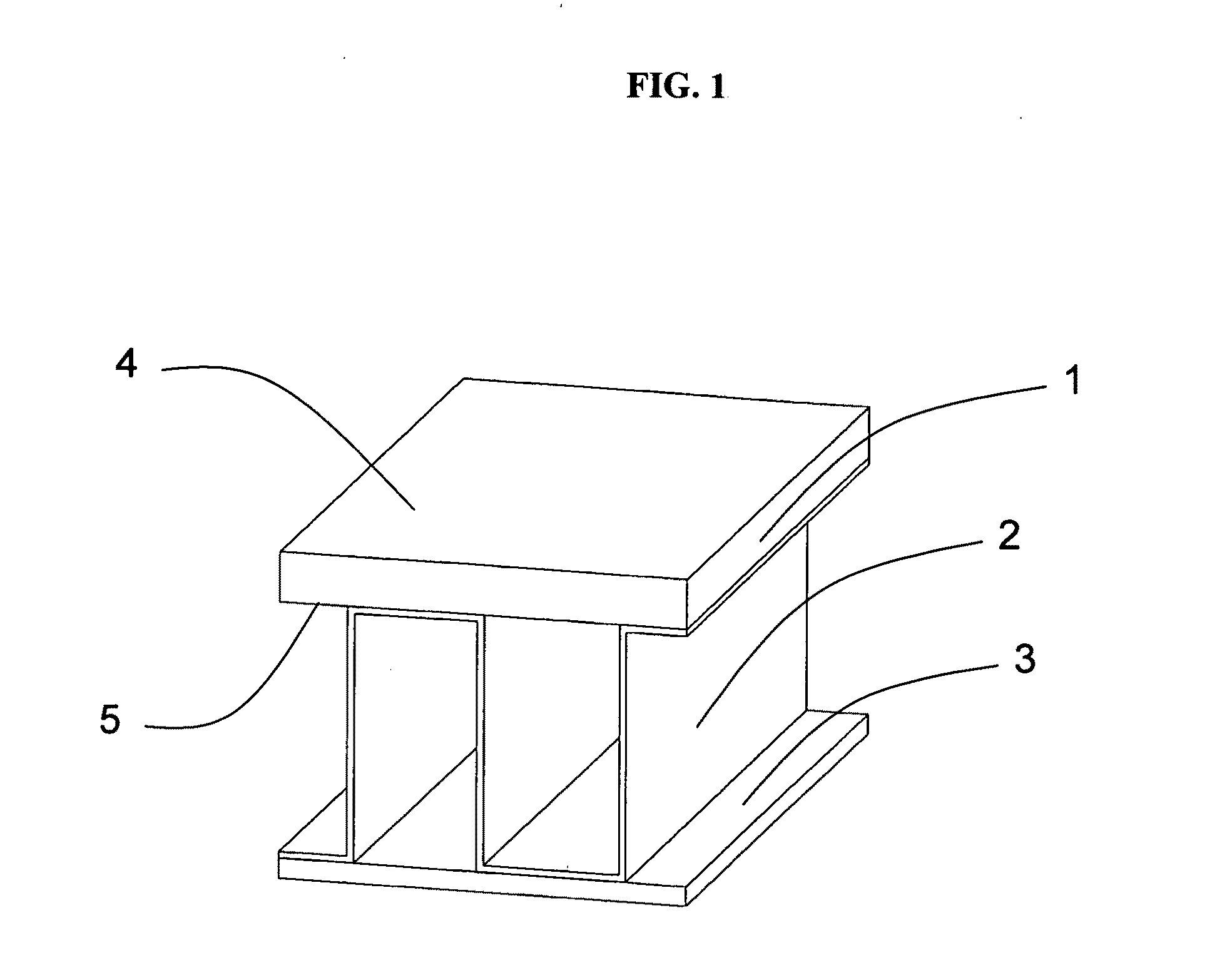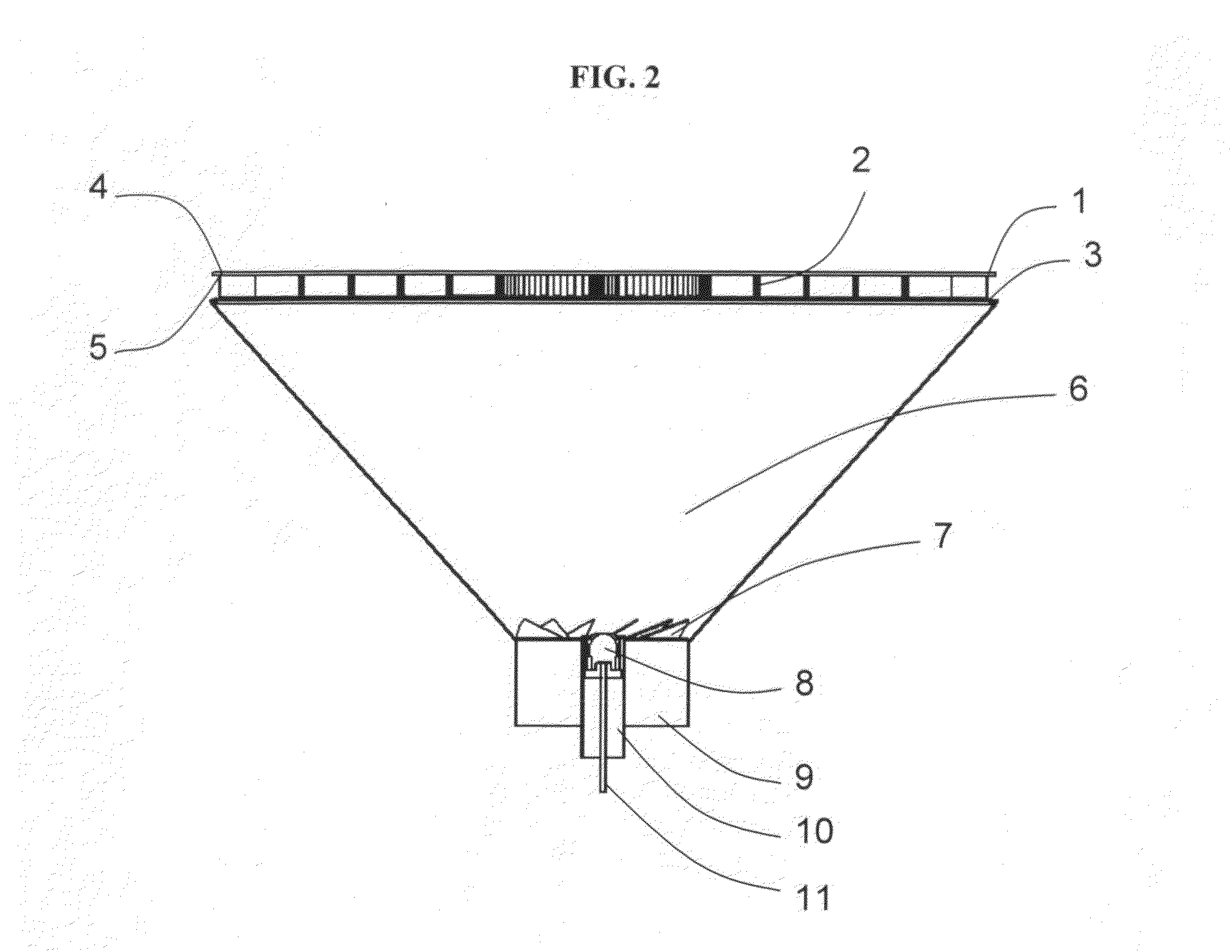Flameless cooking appliance
- Summary
- Abstract
- Description
- Claims
- Application Information
AI Technical Summary
Benefits of technology
Problems solved by technology
Method used
Image
Examples
example 1
[0078]A cooking griddle (18″×18″; 2.25 ft2) (45.7 cm×45.7 cm; 2,088 cm2) in accordance with this invention was constructed in the manner shown in FIG. 2. The housing was constructed of aluminum. The cooking surface consisted of a 0.075 inch (1.88 mm) thick stainless steel sheet chosen for ease of fabrication and heat resistance. A heat spreader was constructed from 0.003 inch (0.075 mm) thick Grade 304 stainless steel sheet. The sheet was bent into a plurality of corrugated fins (1 inch long by ½ inch high, 10 fins / inch) (2.50 cm long by 1.25 cm high, 4 fins per cm), as shown in FIG. 1 (2) and FIG. 3. A series of resistance welds was made onto the ridge of each fin (top side contacting underside of cooking surface FIG. 1(5)) by means of the copper electrode method described in detail hereinabove. A Microlith® brand combustion catalyst obtained from Precision Combustion, Inc. of North Haven, Conn., and comprising noble metal deposited on ultra-short-channel-length metal mesh substrat...
PUM
 Login to View More
Login to View More Abstract
Description
Claims
Application Information
 Login to View More
Login to View More - R&D
- Intellectual Property
- Life Sciences
- Materials
- Tech Scout
- Unparalleled Data Quality
- Higher Quality Content
- 60% Fewer Hallucinations
Browse by: Latest US Patents, China's latest patents, Technical Efficacy Thesaurus, Application Domain, Technology Topic, Popular Technical Reports.
© 2025 PatSnap. All rights reserved.Legal|Privacy policy|Modern Slavery Act Transparency Statement|Sitemap|About US| Contact US: help@patsnap.com



